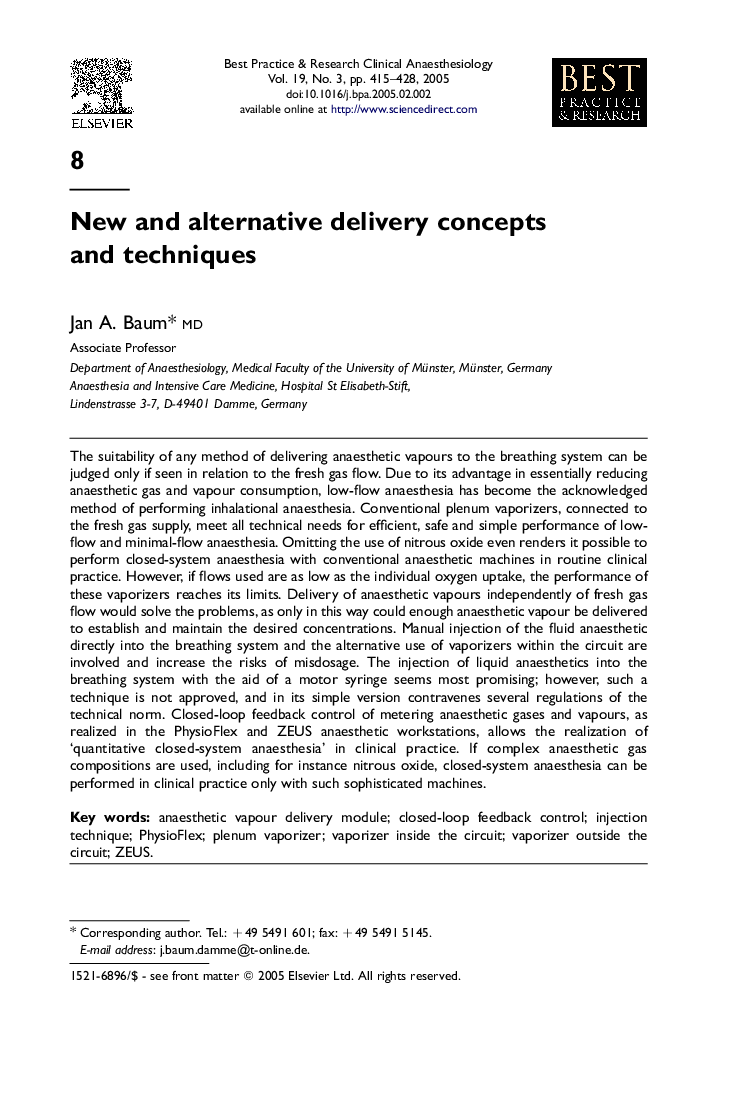| Article ID | Journal | Published Year | Pages | File Type |
|---|---|---|---|---|
| 9092687 | Best Practice & Research Clinical Anaesthesiology | 2005 | 14 Pages |
Abstract
The suitability of any method of delivering anaesthetic vapours to the breathing system can be judged only if seen in relation to the fresh gas flow. Due to its advantage in essentially reducing anaesthetic gas and vapour consumption, low-flow anaesthesia has become the acknowledged method of performing inhalational anaesthesia. Conventional plenum vaporizers, connected to the fresh gas supply, meet all technical needs for efficient, safe and simple performance of low-flow and minimal-flow anaesthesia. Omitting the use of nitrous oxide even renders it possible to perform closed-system anaesthesia with conventional anaesthetic machines in routine clinical practice. However, if flows used are as low as the individual oxygen uptake, the performance of these vaporizers reaches its limits. Delivery of anaesthetic vapours independently of fresh gas flow would solve the problems, as only in this way could enough anaesthetic vapour be delivered to establish and maintain the desired concentrations. Manual injection of the fluid anaesthetic directly into the breathing system and the alternative use of vaporizers within the circuit are involved and increase the risks of misdosage. The injection of liquid anaesthetics into the breathing system with the aid of a motor syringe seems most promising; however, such a technique is not approved, and in its simple version contravenes several regulations of the technical norm. Closed-loop feedback control of metering anaesthetic gases and vapours, as realized in the PhysioFlex and ZEUS anaesthetic workstations, allows the realization of 'quantitative closed-system anaesthesia' in clinical practice. If complex anaesthetic gas compositions are used, including for instance nitrous oxide, closed-system anaesthesia can be performed in clinical practice only with such sophisticated machines.
Keywords
Related Topics
Health Sciences
Medicine and Dentistry
Anesthesiology and Pain Medicine
Authors
Jan A. (Associate Professor),
